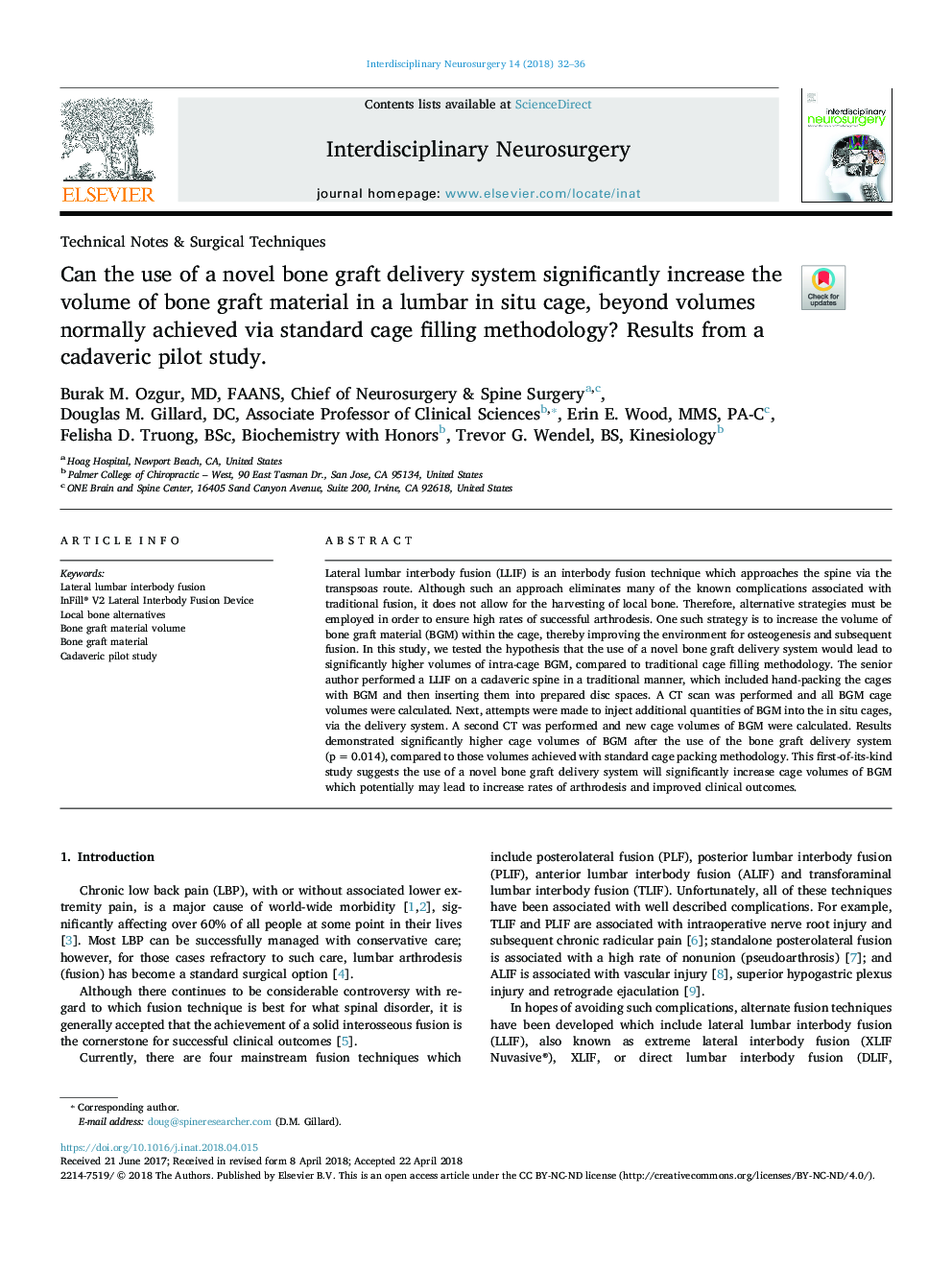| Article ID | Journal | Published Year | Pages | File Type |
|---|---|---|---|---|
| 8684841 | Interdisciplinary Neurosurgery | 2018 | 5 Pages |
Abstract
Lateral lumbar interbody fusion (LLIF) is an interbody fusion technique which approaches the spine via the transpsoas route. Although such an approach eliminates many of the known complications associated with traditional fusion, it does not allow for the harvesting of local bone. Therefore, alternative strategies must be employed in order to ensure high rates of successful arthrodesis. One such strategy is to increase the volume of bone graft material (BGM) within the cage, thereby improving the environment for osteogenesis and subsequent fusion. In this study, we tested the hypothesis that the use of a novel bone graft delivery system would lead to significantly higher volumes of intra-cage BGM, compared to traditional cage filling methodology. The senior author performed a LLIF on a cadaveric spine in a traditional manner, which included hand-packing the cages with BGM and then inserting them into prepared disc spaces. A CT scan was performed and all BGM cage volumes were calculated. Next, attempts were made to inject additional quantities of BGM into the in situ cages, via the delivery system. A second CT was performed and new cage volumes of BGM were calculated. Results demonstrated significantly higher cage volumes of BGM after the use of the bone graft delivery system (pâ¯=â¯0.014), compared to those volumes achieved with standard cage packing methodology. This first-of-its-kind study suggests the use of a novel bone graft delivery system will significantly increase cage volumes of BGM which potentially may lead to increase rates of arthrodesis and improved clinical outcomes.
Related Topics
Health Sciences
Medicine and Dentistry
Clinical Neurology
Authors
Burak M. MD, FAANS, Chief of Neurosurgery & Spine Surgery, Douglas M. DC, Associate Professor of Clinical Sciences, Erin E. MMS, PA-C, Felisha D. BSc, Biochemistry with Honors, Trevor G. BS, Kinesiology,
